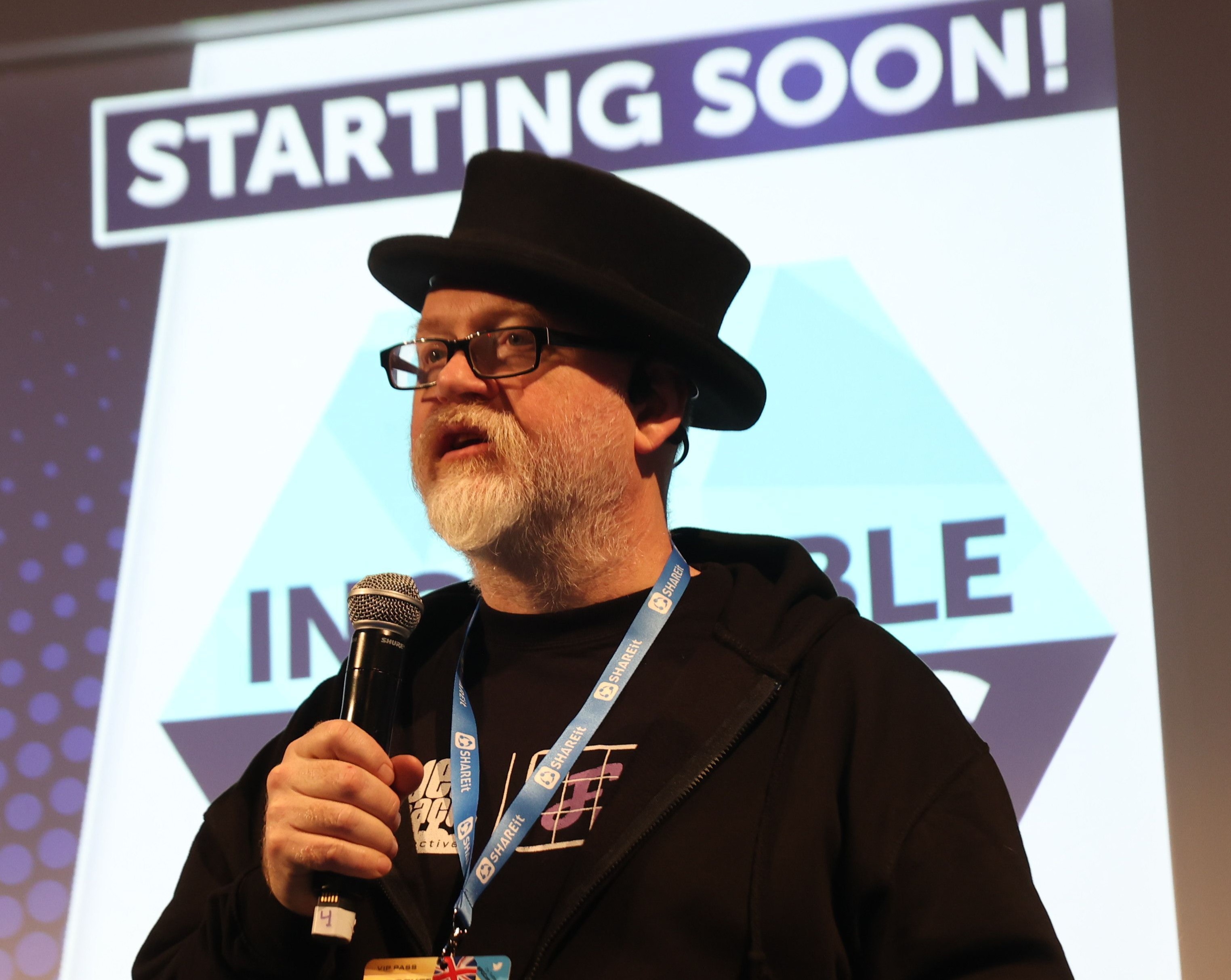How to monetise your game
From traditional premium pricing to free-to-play with in-app purchase and season passes, we explore the different methods of making money from games with insights from publishers and industry experts
25 March 2025 • 10 minute read

Games continue to be big business, with the UK video games market alone reaching a value of £7.82 billion in 2023, and £5.18 billion of that accounting for software sales. The landscape has also changed significantly in the past decade, with physical game sales in decline as digital continues to grow, while the popular model of free-to-play live-service games also disrupts the tradition of paying upfront for a one-and-done game.
The disruption also means there are now more ways than ever for developers and publishers to monetise their games, whether that's to sustain their game and company for years to come or make a return on one game in order to fund the next one. But how you choose to monetise your game will also depend on the kind of game you're making.
The price of premium
When looking at the traditional premium model, there are many different price points that diverge from the top end where the typical blockbuster game retails for £70 (not including deluxe or collector's editions).
"There are many price points for premium games depending on various factors, including invested development budget and expected sales, the storefront and geography it is being sold, what games a publisher is trying to compete with, and also what [in-game] monetisation models the game has," explains games industry analyst Piers Harding-Rolls.

For indie releases, those price points can vary significantly too, and while the pricing may be considering development costs as a factor, the price you land on also sets a value proposition for the player.
"Understanding what the price communicates about the game is massively important," says Oscar Clark, CEO of Fundamentally Games. "Because what is a £17.99 game? What does it say to you emotionally? It's not going to be looked at in isolation. You're going to look at it in terms of the quality of the graphics. There's an expectation a £17.99 game is not throwaway, that it is of a sufficient quality and the team has created an experience that you're going to value. But are you going to value it more than a £12.99 game? And what does the £12.99 game say that's different from a £17.99 game?"
Besides the launch price, discounting is also a whole other strategy that needs to be considered, from how much the discount is to how soon after launch a discount occurs.
"Generally for a straightforward premium game, a publisher would expect to do the majority of its sales in the first two months," says Harding-Rolls. "Having a multi-faceted pricing strategy which includes having tactical discounting can elongate the sales cycle of a title."
Of course, it is not uncommon for a major release to meet with disappointing launch sales (depending on various factors), which can lead to publishers deciding to discount the game just a month after launch. If that turns around its fortunes, it's an example of price elasticity of demand. However, it may also send a message to customers that the original price was a rip-off based on what the game had to offer.
"You have to get your price right at the beginning and then understand how your journey of progressing your discounts tells a story about the game," explains Clark. "Offering a 20% discount on Steam is the level at which you need to trigger an automatic prompt to your wishlisters who didn't buy at launch that now is the time to get it. If that works, fantastic. But if it doesn't work, you're going to keep digging. Unless you're starting to see significant take up of the discount, you're going to find yourself having to dig deeper into your discount range continuously."

It's also possible to discount more aggressively, such as in instances on the Nintendo eShop where a game reduced to 99p can boost sales to the extent that it becomes visible on the store's sales chart – although Clark adds a note of caution to this. "The trouble is once you've dropped that level of price it will be visible that's what's happened, so you can't go back from that."
With the rise of subscription services like Xbox Game Pass, Netflix and Apple Arcade, getting a deal to have your game included in a service provider's library has been an important source of revenue for smaller developers, though can also serve as a promotional boost for existing titles.
"There are, however, finite slots for games and the terms offered are often not as generous now as they have been in the past," warns Harding-Rolls.
It's a contrast to when a handful of indies were essentially able to have a Game Pass deal cover their development costs, or when Apple Arcade launched by directly funding exclusives for the platform.
Of course, premium games needn't be one-and-done either, as you can continue boosting revenue with DLC, either in the form of expansions or with cosmetics. How these are priced would also impact players differently, especially as traditionally games would already include unlockable bonuses such as new game modes or costumes to boost replay value. For premium games, where the player has already paid upfront, it can be a tricky balance asking them to pay more for what they may consider should already have been included.
"If you have a charge up front and you have subsequent upsells, there is typically a cap on how much people are willing to spend on the upgrades because you framed the value of the game," says Clark. "But if you have a free game, there is no cap on your expectation of the value because your value is set on the expectation of the items within the game, not on the game itself."
Free for all
It's why the games that are able to maximise their revenue not just at launch but for many years primarily adopt the free-to-play model, with new content regularly being released that encourages players to spend. This, too, has been an evolution in more recent years as many free games on mobile can also generate revenue not just from players but from ads.
This was how developer and publisher Kwalee had been operating as a company known for hypercasual games on mobile. While Bruno Balistrieri, a monetisation analyst for the company, tells us the approach has been changing to a more hybrid casual approach with an aim for higher retention and more in-app purchases (IAPs), he was nevertheless able to share insights for the way ads can be used for generating revenue.
"There are mainly three types of ad: interstitials, rewards videos, and banners," he explains. "Interstitials come after the level, for example, but the logic is that as a player you're enjoying the game for free, so please understand you have to watch this ad. Reward videos users click on purpose to win five [premium] coins in exchange for watching an ad for 30 seconds, for example. Banners have a lot of impressions but they're kind of hidden on the screen, so the price of these ads is lower because the interaction is low – they're more like a subliminal message."
For mobile, ads can remain an invaluable way to generate revenue even if a game incorporates in-app purchases since there are no guarantees that players will spend in the game. Balistrieri calls this a balancing act between the two.
"If we have more of an in-app based game, we could display less [ads], but if you see that the user is not complying or buying anything, we understand that maybe we should display some more ads."

When it comes to making in-app purchases, it's a common practice that developers include a premium currency that is used in the game itself, such as V-Bucks in Fortnite, so that when users spend real money it is only on in-game currency rather than on specific content that may take them out of the game and to the platform's own digital storefront.
"In-game currency can be fully integrated into game rewards and activities as well as being bought by players," Harding-Rolls explains. "The use of a virtual currency also reduces players from assessing the pricing of items in real money terms."
The type of in-app purchases that exist vary, but can be broken down into subsistence items, which are essential in order to play, such as energy that might limit the number of times you can play the game or earn rewards from a certain activity. Another form can be shortcuts, such as immediately earning boosters that the player would otherwise have to grind hours for. Perhaps the most popular in-app purchases, however, are what Clark refers to as 'social goods', such as cosmetic items or gifts.
Season Ticket
Arguably, the major trend that has become lucrative for many live service-based games is the battle pass, or season pass. These usually include a free tier so that anyone can be still earning some kind of reward just for playing and completing in-game objectives, but a premium pass means even more rewards, including unique ones that may only exist for that period, which creates both a sense of anticipation and fear of missing out (FOMO).
"At its heart, [battle passes] are the ultimate value proposition for a player if it's done well," Clark explains. "A free player can get new content every month, but they can't unlock everything, so they can unlock any one thing that the battle pass offers them, they can save up their points, they can play more. A VIP player is going to get more opportunities to earn this seasonal currency. They can unlock everything, but only if they play just as hard as any free player. The point of a good battle pass is it should be focused on the more you play, the more you get."
When it comes to implementing seasonal passes or in-app purchases, it's down to the developer to understand their own game as well as their players.
"If we don't have a structured game economy, we don't know what we are offering, we don't know what the user progress inside the game will be, we don't know our own game," says Balistieri. "That's why it's really important to focus on the product if you want to have good in-app purchases. The designers are all combined on designing the path that the user must follow, everything organised, planned, the blueprint of everything to make the user buy and that's the most important part."
Putting it more bluntly, Clark says, "Don't let accountants do your monetisation."
Successful games with in-game monetisation are then usually designed that way from the ground up, rather than something that is retrofitted in later. For example, if a game suddenly starts adding character skins and other cosmetics, players won't be compelled to buy if the game doesn't feature a way for them to be shown off. Implementing or changing prices in features that had been originally part of the package can also lead to player backlash.
"Well-designed monetisation will always be transparent," says Clark. "Players who feel that they were hoodwinked, tricked or otherwise manipulated into making a purchase will feel upset about the game. And guess what happens if someone feels harmed and upset about a game? They leave."
While it's easy to look at the biggest success stories in the industry, Harding-Rolls also warns that it's not just about copying another game's monetisation plans expecting similar results.
"Many games with season passes need scale and are competing against other free-to-play titles, so having a premium strategy wouldn’t work," he says. "There are a few games that have worked, but they tend to be on console and from established franchises."
Nonetheless, the way game monetisation is always rapidly changing, in the same way that so many different revenue models have developed beyond the tradition of selling a physical game in a bricks-and-mortar store.
"You have to be updated with every single monetisation strategy that's in the industry," Balistieri concludes. "That's why it's important to always go to conferences to understand what people are doing in their apps, and what's new. I've been working in this space for over six years now and I've seen the industry changing every year, it's always a different approach. The new possibilities that come and go, things that were working before are not working now – if you want to generate more profit, it's really necessary to stay up to date."
Barclays (including its employees, Directors and agents) accepts no responsibility and shall have no liability in contract, tort or otherwise to any person in connection with this content or the use of or reliance on any information or data set out in this content unless it expressly agrees otherwise in writing. It does not constitute an offer to sell or buy any security, investment, financial product or service and does not constitute investment, professional, legal or tax advice, or a recommendation with respect to any securities or financial instruments.
The information, statements and opinions contained in this content are of a general nature only and do not take into account your individual circumstances including any laws, policies, procedures or practices you, or your employer or businesses may have or be subject to. Although the statements of fact on this page have been obtained from and are based upon sources that Barclays believes to be reliable, Barclays does not guarantee their accuracy or completeness.
Topic
Related tags